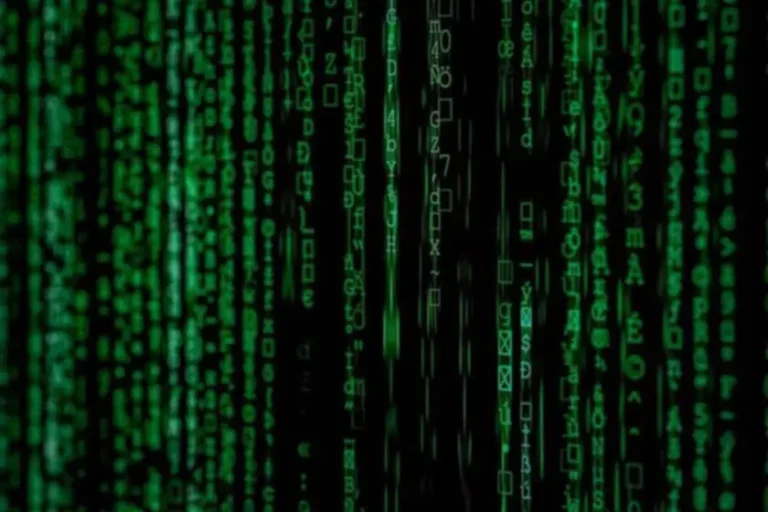A high department coverage implies that most determination paths within the code have been tested, increasing the chance of detecting potential defects. Branch protection reviews on whether or not all paths via management structures have been taken. In basic, management buildings categorical branching selections within the type of boolean expressions, in order that department coverage measures whether or not such expressions have evaluated to both true and false. But ABAP also has non-conditional branch statements, in which branching isn’t governed by the evaluation of a boolean expression. Branch protection is a metric that measures how many branches or choice factors of the source code are executed by the check circumstances. A branch is a degree the place the code can take completely different paths primarily based on a condition, corresponding to an if-else assertion http://nnit.ru/news/n204051/, a switch-case assertion, or a loop.
- It helps confirm the standard of the take a look at set and find the unexercised areas.
- It is a sequence of execution of conditional statements performed in a particular order.
- 79% is achieved when executing the libquantum benchmark with a sampling rate of 500 thousand.
- Branch coverage helps to determine the logical complexity and diversity of the code, and to make sure that all attainable outcomes of the branches are examined.
A Meaningless Method To Achieve One Hundred Pc Code Coverage
Use this kind of protection to determine whether or not every statement in this system has been invoked at least once. Tools corresponding to JaCoCo and Istanbul enable developers to determine the areas of the code that haven’t been examined adequately. These tools provide detailed reports on code coverage, allowing the builders to trace their tests’ progress. Line protection is the least useful because it’s principally the same as statement coverage besides that assertion protection is slightly smarter.
Department Coverage: How It Differs From Comparable Metrics

This coverage measure exhibits you the share of all possible paths—branching combinations—that are getting tested. However, despite 100% protection, which isn’t realistic for industrial systems, there could still be hidden errors. If you want to get probably the most out of your code coverage, you should be using each line and branch protection. Getting line protection is necessary to track that every one traces are being run. But tracking department coverage helps to just be sure you aren’t missing edge instances. When a test suite is run, code coverage information which lines of code had been hit.

The Several Varieties Of Code Protection

That’s what we meant by saying that it’s a extra nuanced metric. Only caring about assertion protection can provide teams a false sense of safety in relation to the comprehensiveness of their tests. As you’ll quickly see, branch coverage is extra nuanced than different metrics. A totally different metric could be at 100%, while branch protection is lower. By only monitoring the other metric, a staff can have an unjustified diploma of confidence in their code, and essential defects would possibly go unnoticed till they manifest in manufacturing.
Example Of Improved Software Program High Quality Via Department Coverage
The branch protection criterion defines TR to incorporate all of the branches (edges originating from decision nodes) in all of the CFGs of the features within the subject program. Thus, for T to satisfy branch protection, T should exercise every department of each control construction. For instance, given an if assertion, the physique of the if ought to be executed in a minimal of one occasion and skipped in at least one other occasion.


The time overhead of executing larger packages with LBR sampling will increase when sampling at smaller rates such as 500 thousand. This is doubtlessly due to the operating system becoming overloaded with interrupts at decrease sampling charges. At greater charges (e.g. 5 million, 10 million, 50 million), the time overhead incurred shown in Fig. 9 is in preserving with the time overhead when executing on the check inputs, which is proven in Fig.
Branch protection can additionally be normally expressed as a percentage of the entire number of branches in the code. For example, if the code has 20 branches and the take a look at instances execute 16 of them, the branch protection is 80%. Branch protection helps to determine the logical complexity and variety of the code, and to make sure that all possible outcomes of the branches are examined. This code coverage metric measures whether the overall result of the expression in every control structure evaluated to each true and false. This addresses the major deficiency of statement protection because you will know if the situation in Line three evaluated to false. ABAP’s department coverage does not provide the risk of measuring condition protection – whether or not boolean subexpressions in a control statement have evaluated to each true and false.
In this work, the additional requirement was made that the source code cannot be modified in any way prior to execution. Therefore, the method makes use of solely hardware mechanisms to observe execution whereas requiring no code progress, recompilation, or compiler analysis instruments. As we’ve identified above, Expression/Condition protection exhibits more element in comparability with statement protection, similarly this holds true when analyzing path protection data with branch coverage. Conditional statements like if-else and case create completely different paths for the stimulus to move in your design. While department coverage reveals you the execution of branches, path protection reveals you the execution of the program paths and analyzes all attainable sequences of program execution. In software engineering, code coverage, additionally known as take a look at protection, is a share measure of the diploma to which the supply code of a program is executed when a selected take a look at suite is run.
A branch represents a distinct end result from a choice point, corresponding to an if-else statement. Achieving excessive branch coverage ensures that tests are thorough, covering a broad array of eventualities that the software program may encounter in operation. You have to test for every control construction all of the potential cases (enter/not enter in if statements, f.e., and all the circumstances of a switch). Branch protection is a metric that measures (usually in percentage) how many of the complete branches your checks cover.
Look at the src/routes/account/settings/email line, for instance. It has a statement coverage of eighty four.62%, which we think is good. The interesting bit now might be that we are ready to see that there are three folders or modules which have a excessive enough code coverage value.
Sjeng achieves 82.61% of the coverage reported when monitoring by instrumentation, though the time overhead at that fee is 21.57% worse than instrumentation. However, at a sample price of fifty million, sjeng still achieves 70.15% of the coverage reported using instrumentation while executing 12% faster than instrumentation. At a pattern rate of 50 million, the common percent of coverage reported by instrumentation is decreased to 54%, but with a 6% improvement with regard to time. When larger sampling rates are used, the time overhead of LBR monitoring is improved over instrumentation. However, larger sampling rates additionally correspond with lower effectiveness.
THeME’s modifications are far more light-weight than conventional instrumentation probes and payloads as a end result of these include only unconditional jumps and no payloads. In our benchmarks, full branch instrumentation ends in code dimension will increase ranging from 18% to 32%. THeME, however, generates applications which might be on average only 0.5% larger than the native code. The first problem of this work is in choosing a hardware mechanism for use in sampling. Again, there are a wide-range of hardware mechanisms to select from, and many of those are supported for sampling use at the user and kernel levels. The aim is to choose out a mechanism that’s widely out there on many several sorts of units.